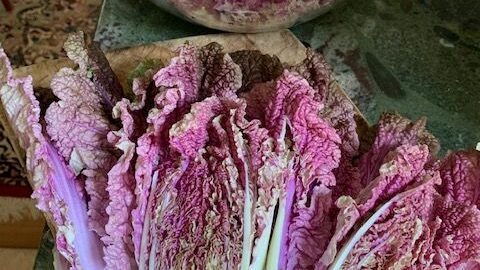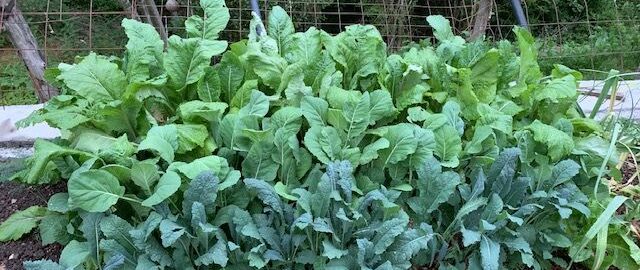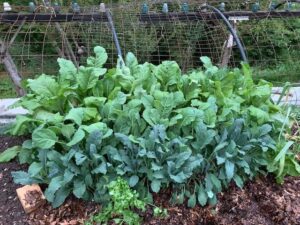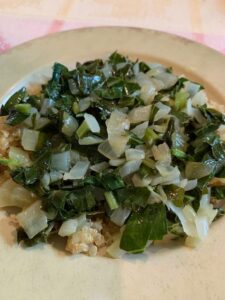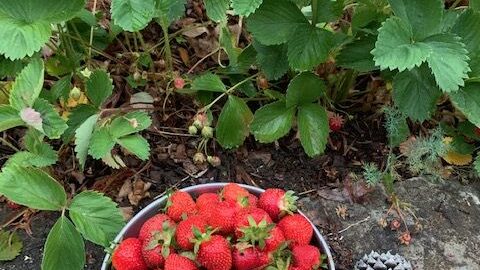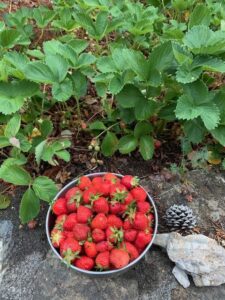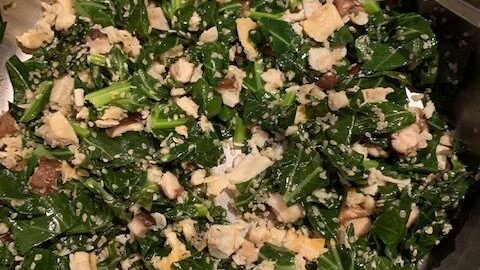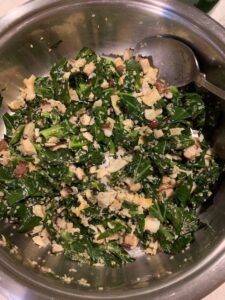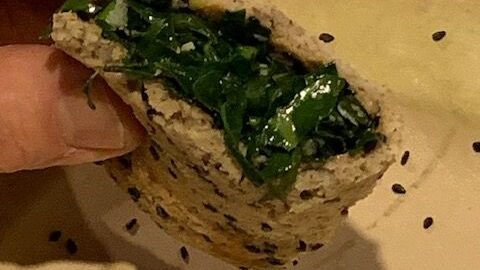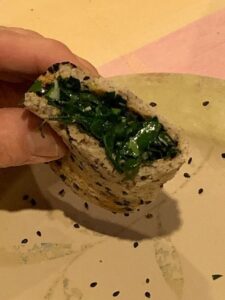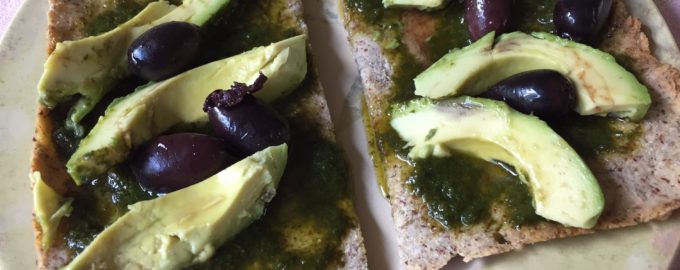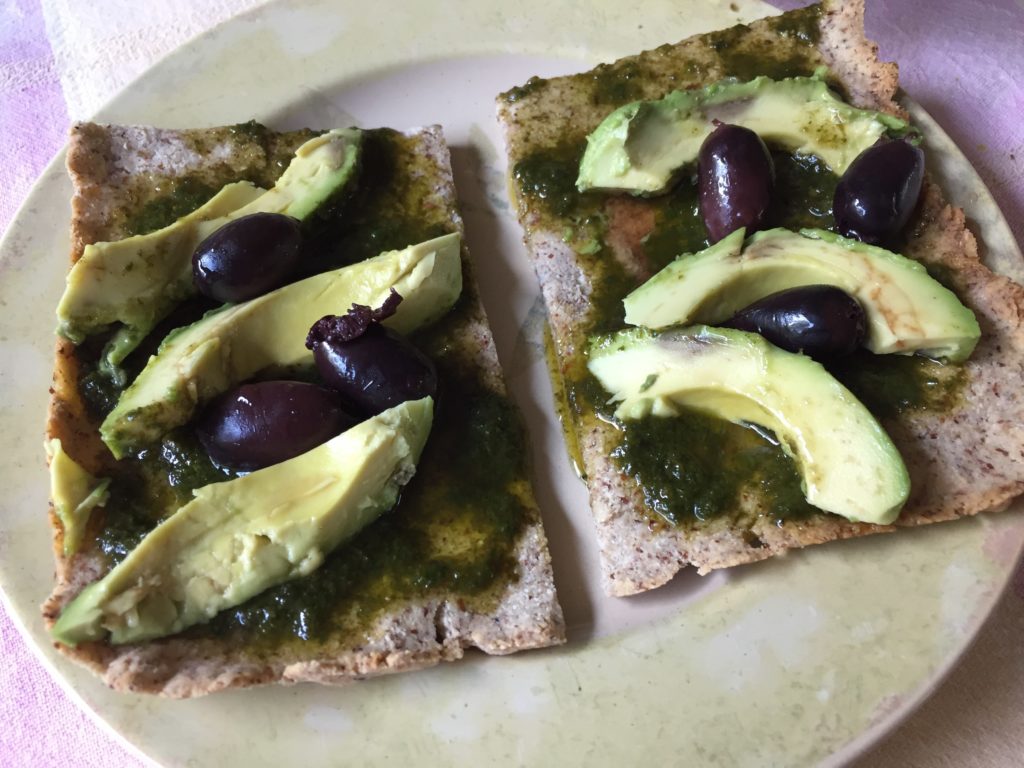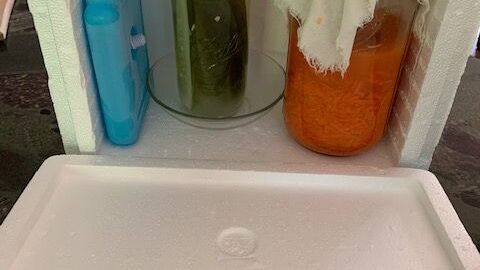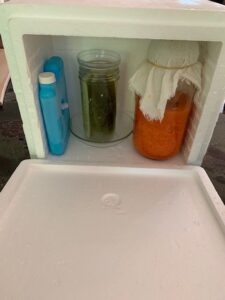
Harvest time already! This red variety of Chinese cabbage is beautifully colored so I wanted to post a picture of it and link it to the previous post for the recipe. I grow the Napa type of cabbage because it matures faster than the round varieties and is not as strong tasting. This year I grew a red variety. Here is the previous recipe for making sauerkraut with this type of cabbage–even though it was with green cabbage the recipe is the same. Check out your farmer’s markets and see what you can find if you don’t have your own garden cabbage.
